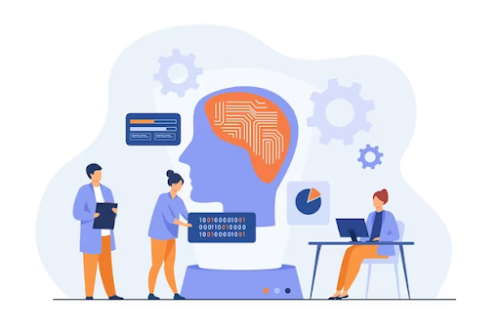Machine Learning for Software Developers: Getting Started with ML in Development


In recent years, Machine Learning (ML) has emerged as a transformative technology, revolutionizing various industries and domains. As a software developer, integrating ML into your skill set can open up new avenues for innovation and problem-solving.
However, diving into the world of ML might seem daunting at first, especially if you’re not familiar with the concepts and tools involved. Fear not, as this blog aims to provide a comprehensive guide to help software developers get started with ML in development.
Understanding Machine Learning
Before delving into the practical aspects, it’s essential to understand what Machine Learning is and how it differs from traditional software development.

In essence, ML enables computers to learn from data and make predictions or decisions without being explicitly programmed to perform specific tasks.
This learning is facilitated through algorithms that iteratively improve their performance on a given task as they are exposed to more data.
Getting Started with ML

Learn the Basics
Begin by familiarizing yourself with the fundamental concepts of ML such as supervised learning, unsupervised learning, and reinforcement learning. Understand how algorithms like linear regression, decision trees, and neural networks work.
Choose a Programming Language
Python is the de facto language for ML due to its extensive libraries and frameworks such as TensorFlow, PyTorch, Ruby on Rails, and scikit-learn. Familiarize yourself with Python if you haven’t already and explore these libraries.
Explore Online Courses and Tutorials
Platforms like Coursera, Udemy, and edX offer numerous courses on ML for beginners. Andrew Ng’s Machine Learning course on Coursera is highly recommended for its comprehensive coverage of the subject.
Practice with Projects
Hands-on experience is crucial in mastering ML. Start with small projects like predicting house prices based on features or classifying iris flowers based on petal dimensions. Kaggle is an excellent platform for finding datasets and participating in competitions to hone your skills.
Integrating ML into Development
Once you have a good grasp of the basics, you can start incorporating ML into your development projects. Here’s how:
Identify Opportunities
Look for areas within your projects where ML can add value. Whether it’s improving recommendations, automating repetitive tasks, or enhancing user experience, there are countless opportunities to leverage ML.
Data Collection and Preprocessing
ML models rely on quality data for training. Collect relevant data from various sources and preprocess it to ensure it’s clean, balanced, and representative of the problem you’re solving. This type of integration is crucial for donation database software, financial database software, etc.
Model Selection and Training
Choose the appropriate ML model based on the problem at hand and the nature of your data. Train the model using your dataset and fine-tune its parameters to optimize performance.
Integration with Existing Systems
Integrate your trained model into your existing software systems using APIs or libraries provided by ML frameworks. Ensure seamless interaction between the ML component and the rest of your application.
Testing and Evaluation
Thoroughly test your ML model to assess its accuracy, robustness, and scalability. Use techniques like cross-validation and A/B testing to evaluate its performance in real-world scenarios.
Continuous Improvement
ML models are not static; they need to adapt to changing data and requirements. Implement mechanisms for monitoring model performance and retraining it periodically to ensure it remains effective over time.
Final Words
Machine Learning holds immense potential for software developers to create intelligent and innovative solutions. By understanding the fundamentals, exploring practical applications, and integrating ML into development projects, you can stay ahead in the rapidly evolving tech landscape.
Remember, mastering ML is a journey that requires continuous learning and experimentation, so don’t be afraid to explore and push the boundaries of what’s possible. With dedication and perseverance, you’ll soon be harnessing the power of ML to build groundbreaking software applications.
Happy Machine Learning!!


